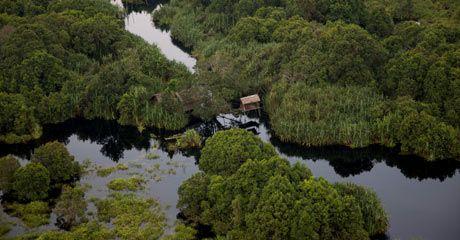
Since my last post, the good ship Esperanza has traveled further along the length of Indonesia as part of Greenpeace’s Forests For Climate campaign. We spent a few days in Jakarta to do a lot of media and political work, and to give Javanese Greenpeace supporters a chance to look around the ship and meet the crew.
Part of the political stuff involved presenting the big plan our campaigners have developed to build a forest protection fund from international contributions as part of the Kyoto process. I had intended to cover it in this post, but the labyrinthine process needs a whole article to itself and first I want to show you some of the images we’ve gathered from the field over the past couple of days. I’ll come back to the plan very soon, Scout’s honor.
We’re currently anchored near Sungai Pakning, a small port on the coast of Riau in Sumatra (see where we are on our Google Map). It’s a wide, silty channel running between the mainland and two islands, Pulau Bengkalis and Pulau Padang. The soupy water flowing gently past the ship will be down to the Siak river, the mouth of which is just a few miles south.
Sungai Pakning might be small, but the signs of what’s happening further inland are everywhere. Large container ships wait patiently at anchor for their cargoes and the flame at the top of a refinery lights up the night sky. For we’re on the edge of the great plantations which have come to dominate this area, both the oil palms we’ve seen so much of in the past and, increasingly, acacia trees which are being harvested to be used as pulpwood and paper.
All these plantations are sitting on areas which used to be lowland forest growing in thick, water-logged peat. Of course, the forest is no longer there and the peat has been drained and burnt, causing the annual smog which drifts over south-east Asia during the burning season. It’s this chopping, draining and burning which is releasing colossal quantities of greenhouse gases and helping to give Indonesia the number three spot in the global emissions charts.
Tweety, the Esperanza’s helicopter, has been heading out on further reconnaissance missions. The rainy weather has been frustrating our efforts but John and Kasan – photographer and videographer respectively – have already made a couple of flights over the Kampar peninsula. It’s an area we’re particularly interested in because it has a large area of swampy forest which is still intact, and just over a year ago it was the scene of a Greenpeace Forest Defenders Camp, where volunteers built dams across the drainage canals to prevent the peat from drying out.
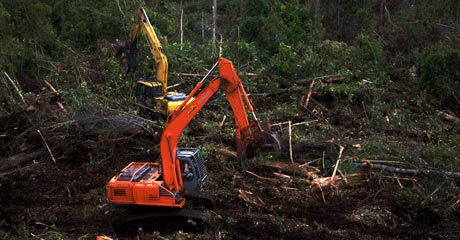
Sadly, the news is not good. As you can see from the image above, bulldozers are clearing through some of the remaining areas of forest. Just picture it: a few days (or even hours) before our camera got there, that piece of land was covered in forest which had probably been there for thousands of years. Now it’s gone, taking with it the wildlife and vegetation it harboured, along with any possibility that local communities might be able to sustain themselves. It was happening while our helicopter flew past and it’s still happening as you read this.
There is a chunk of peatland forest within the peninsula which enjoys protection but a quick glance at the detailed map of the area we have in the campaign office reveals that it’s encircled by logging and plantation concessions owned by companies such as Duta Palma, Asian Agri and Asian Pulp and Paper (APP, a subsidiary of palm oil giant Sinar Mas), and with illegal logging rife there’s no guarantee it will remain untouched.
These same companies are members of the Roundtable on Sustainable Palm Oil which, in theory at least, are not supposed to be ravaging the environment like this. The RSPO was formed back in 2001 as a market-led effort to solve the problems caused by the ever-growing industry but as things stand it’s just not up to the job. Regardless of whether its standards are rigorous enough to really produce sustainable palm oil, many of its members are still tearing down forests, draining peatlands and shafting local communities. keithf has already explained in no uncertain terms on this very blog what the flaws of the RSPO are.
As a result of this rampant plundering, much of Sumatra’s forests are gone. Riau used to be awash with trees – back in 1982, 78 per cent of the province was covered in them – but it’s been stripped away and replaced with oil palm plantations as well as acacia for pulpwood and paper. In the last 35 years, about 61 per cent of Riau’s forest cover has gone up in smoke.
So if that’s the case, why bother trying to save a few small areas? Because the stakes are high. The depth of the remaining peat in the Kampar peninsula is up to 15m in places, so there’s a lot of carbon locked up there. If that were all to become converted into endless monocultures, then we’re looking at a release of greenhouse gases equivalent to an entire year’s worth of global emissions.
A few weeks ago, I saw the forests of Papua and West Papua interrupted by logging roads and a few plantations, but largely they’ve been undisturbed in their earthy magnificence. Here in Sumatra, the reverse is true, and the fate of the forests here could be repeated back in New Guinea. Fortunately, Wan Abubakar – the governor of Riau – has demanded a moratorium on logging in the province, but this needs to be ratified by the national government. And so the political wrangling goes on.
We’re sticking around here for a few days to do some more research and hopefully in the next couple of days I’ll explain the whole Forests For Climate plan (if you’re in any way interested in the economics of climate change, you’ll be in hogs’ heaven). In the meantime, here are a few more of John’s photos from the past two days.
(All pics © Greenpeace/Novis)
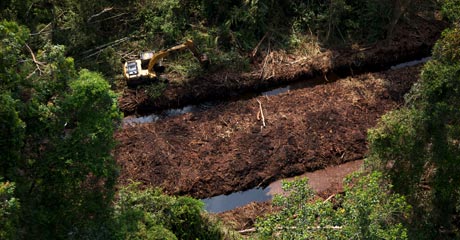
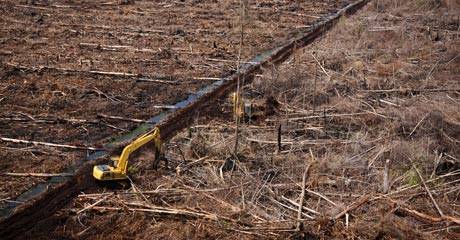
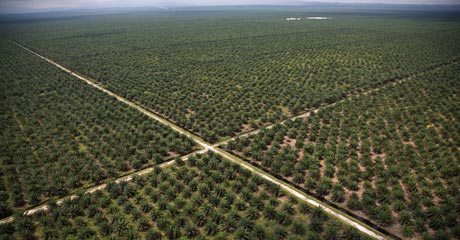
One thought on “Slash And Burn In What Remains Of Sumatra’s Forests”
Comments are closed.